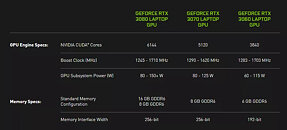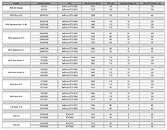
AMD EPYC "Turin" 9000-series Motherboard Specs Suggest Support for DDR5 6000 MT/s
AMD's next-gen EPYC Zen 5 processor family seems to be nearing launch status—late last week, momomo_us uncovered an unnamed motherboard's datasheet; this particular model will accommodate a single 9000-series CPU—with a maximum 400 W TDP—via an SP5 socket. 500 W and 600 W limits have been divulged (via leaks) in the past, so the 400 W spec could be an error or a: "legitimate compatibility issue with the motherboard, though 400 Watts would be in character with high-end Zen 4 SP5 motherboards," according to Tom's Hardware analysis.
AMD's current-gen "Zen 4" based EPYC "Genoa" processor family—sporting up to 96-cores/192-threads—is somewhat limited by its DDR5 support transfer rates of up to 4800 MT/s. The latest leak suggests that "Turin" is upgraded quite nicely in this area—when compared to predecessors—the SP5 board specs indicate DDR5 speeds of up to 6000 MT/s with 4 TB of RAM. December 2023 reports pointed to "Zen 5c" variants featuring (max.) 192-core/384-thread configurations, while larger "Zen 5" models are believed to be "modestly" specced with up to 128-cores and 256-threads. AMD has not settled on an official release date for its EPYC "Turin" 9000-series processors, but a loose launch window is expected "later in 2024" based on timeframes presented within product roadmaps.
AMD's current-gen "Zen 4" based EPYC "Genoa" processor family—sporting up to 96-cores/192-threads—is somewhat limited by its DDR5 support transfer rates of up to 4800 MT/s. The latest leak suggests that "Turin" is upgraded quite nicely in this area—when compared to predecessors—the SP5 board specs indicate DDR5 speeds of up to 6000 MT/s with 4 TB of RAM. December 2023 reports pointed to "Zen 5c" variants featuring (max.) 192-core/384-thread configurations, while larger "Zen 5" models are believed to be "modestly" specced with up to 128-cores and 256-threads. AMD has not settled on an official release date for its EPYC "Turin" 9000-series processors, but a loose launch window is expected "later in 2024" based on timeframes presented within product roadmaps.



























